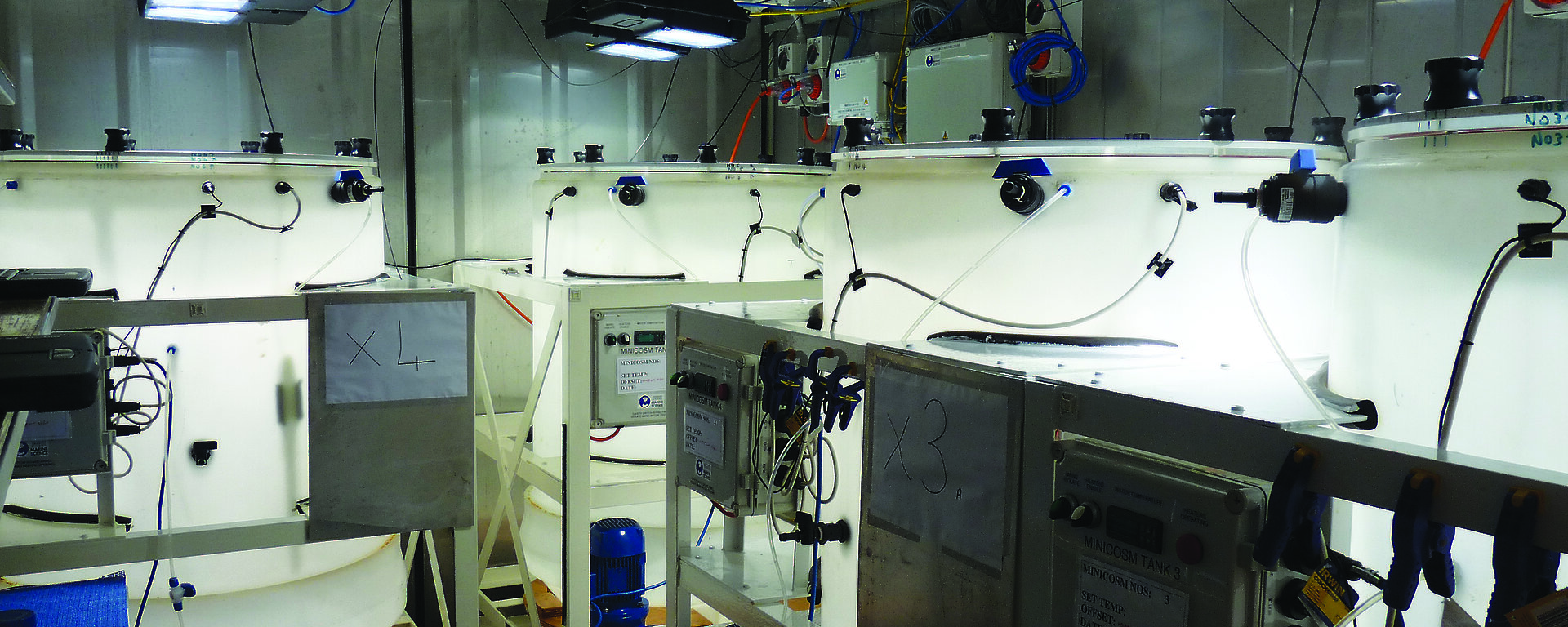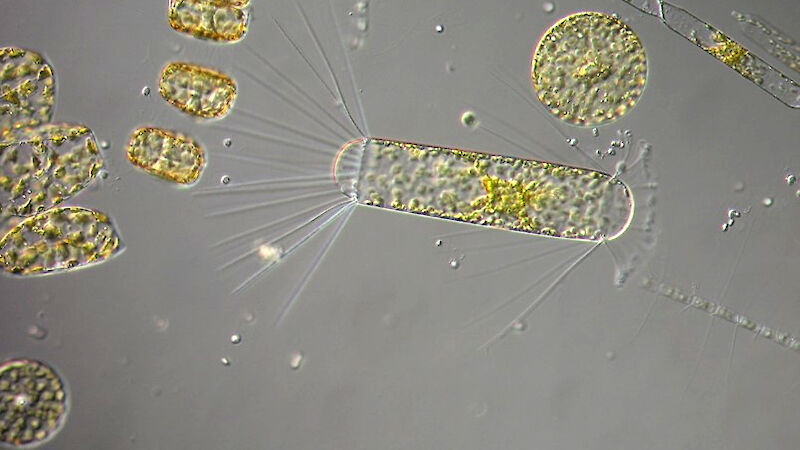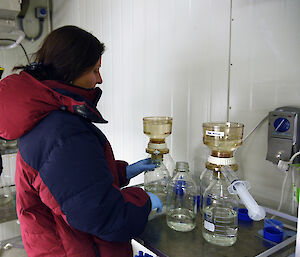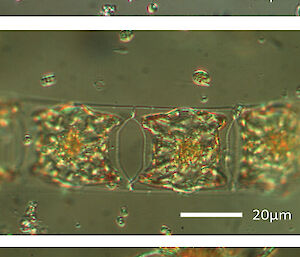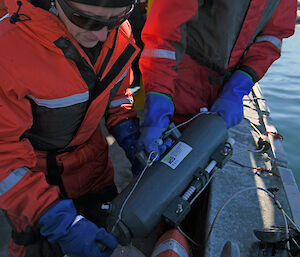Microscopic marine plants encased in glass-like ‘armour’ could struggle to build their protective cell walls as ocean acidification increases.
The Australian Antarctic Program research, led by Dr Katherina Petrou of the University of Technology Sydney, found that ocean acidification, caused by carbon dioxide dissolving in seawater, produces changes in Southern Ocean diatom communities that could adversely affect the ocean’s food web and carbon cycle.
Diatoms, like other phytoplankton, are an important food source for krill, fish and whales, and are responsible for more than 40% of ocean productivity.
“Diatoms build cell walls or ‘frustules’ out of silicic acid, producing a dense, glass-like armour that’s thought to protect against grazers, and helps them to sink,” Dr Petrou said
“This provides an important method for exporting carbon to ocean depths where it may be locked in ocean sediments.
“However, our research shows that ocean acidification leads to changes in the ability of different diatoms to incorporate silica into their cells, which may alter the effectiveness of silicon and carbon cycling, as well as food web dynamics.”
The research, which also involved scientists from the Australian Antarctic Division, Southern Cross University and the University of Tasmania, was conducted at Davis research station in six 650 litre ‘mesocosms’ (incubation tanks) containing natural Antarctic microbial communities.
The communities were exposed to different concentrations of carbon dioxide over 18 days to cover a range of current and future carbon dioxide scenarios.
On day 12, diatoms were removed from each mesocosm to look at their ability to incorporate silica into their cell walls.
“Silicification strongly and significantly diminished with increased acidity, with newly deposited silica declining more than 60% between the lowest and highest carbon dioxide treatments,” Dr Petrou said.
“Thinner frustules have less ballast, which is likely to reduce sinking rates. This means fewer diatoms may end up on the ocean floor, resulting in less carbon dioxide being removed from our atmosphere and transported to the deep ocean.”
Regular sampling to look at community structure and abundance also showed a shift towards small diatoms in response to high carbon dioxide.
“We found that the number of large diatoms decreased from about 40% of the diatom community under current carbon dioxide levels, to just three per cent at the highest levels, Dr Petrou said.
“The diatoms most affected were heavy silicifiers and bloom formers that underpin phytoplankton productivity in the Southern Ocean.”
As the Southern Ocean links the rest of the world’s oceans, the research team said the observed changes in diatoms could affect surface nutrients, primary productivity and the cycling of carbon, globally.
The research is published in Nature Climate Change today. It was supported by Australian Antarctic Science Project 4026 led by former Antarctic Division marine microbial ecologist Dr Andrew Davidson.
Related story: Changes forecast for marine microbial communities

